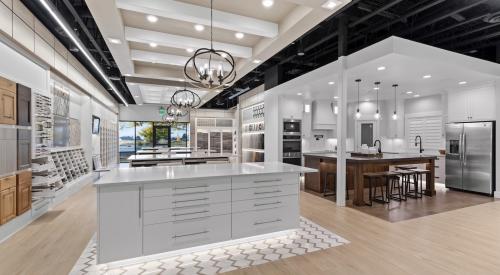| Dean Horowitz, Publisher |
Do new home buyers purchase a home constructed with their preferred brands of building products and assembled by a preferred builder, or do they buy a home from a branded builder and made with quality building products?
This is a pivotal question. It could change the way our industry behaves in the coming years. It really comes down to whose brand matters the most to the consumer.
Building product manufacturers spend millions each year to establish their brands and product categories in the minds of new home buyers. The investment seems questionable when one considers the cost versus the number of homes each individual will buy during the next decade. Check out the aisle devoted to consumer shelter titles in any bookstore and the television commercials showcasing beautifully designed living experiences that only the advertised building product can offer.
BPMs want to create a "pull-through" experience in which the home buyer makes their products mandatory in the new home. Are they creating desire for their products or simply opening categories for a builder to leverage? From the builders’ perspective, things are changing. A few large-volume builders have their brands showcased on housewrap and other products visible from the curb. A regional window manufacturer announced it will produce private-label windows for builders. Now a builder can do away with street signs and instead use the window opening as its company’s marker. A few builders have private-label flooring and cabinetry.
This isn’t revolutionary when you consider that these volume builders look at retail business models as they consider ways to leverage their total sales each year. Many of Wal-Mart’s private-label products outsell competitive branded ones. Did you know Wal-Mart has the best-selling dog food in the country? This is significant when you consider how much Purina, Sensible Choice and Science Diet must spend to establish their brands. In the building products industry, The Home Depot has its own line of paint.
One builder told me his company is doing away with its design centers because it learned that too many choices actually lower customer satisfaction scores. By private-labeling and offering just three packages, this builder could simplify the customer experience.
Ultimately, negotiations between a large-volume builder and a BPM will include a spec sheet, installation and warranty expectations, and how the builder’s brand will be showcased on the products. This could throw many elements of the supply chain into a spin as buying becomes driven by specifications, not the manufacturer. Advertising in trade magazines will become even more meaningful as builders will need to know the competitive offerings available only to them.
Has the sales message of "I am a quality builder, and these are the quality brands I use" gone away? Absolutely not. Quality branded products will always be significant to our industry and the buyers of our products. Just consider all the products we buy because they are equal to or exceed the standards of other products on the market. From salon products to medication, we need to know only that the retailer stands behind it and it is like the brands we see advertised.
So where does this put quality BPMs? In a stronger position than before, and here’s why: Competition already is moving to standards based on performance criteria only the best companies can meet. The cost of advertising to consumers can be shifted to funding for product innovation that delivers product superiority. Product superiority eliminates headaches for builders and establishes loyalty, which in turn establishes leading brands.












